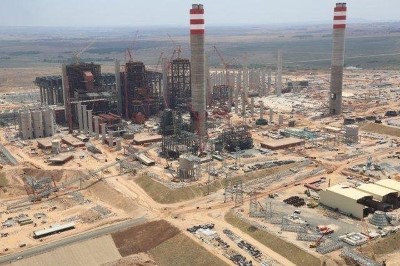to Accurately Track Contractor Performance Measurement Baselines in South Africa’s Power Generation Industry
FEATURED PAPER
By Juan Marcel van Aswegen
Johannesburg, South Africa
Abstract
Because of a shortage of accredited Project Controls Professionals in South Africa with proficiency in AACE and GPC methodologies, tools, techniques and recommended practices (RP), best practice is mostly ignored to track Contractor performance effectively. Proven and tested EVM and ES forecasting techniques are disputed; denying the true value of EVM.
The main sources of information that used for performing the analysis of this paper come from the NDIA[1], GPCCaR[2] and the GAO[3]. This paper applies the EVM forecasting formulas, contained within these sources, to the case study project of Kusile Power Station to monitor and control the Contractor’s schedules during the procurement and execution phases. GAO best practices were employed during the early phases to create a realistic and reliable baseline schedule.
This paper provides a set of guidelines for fellow practitioners to follow when developing similar mega, multi-disciplinary project forecasts, thereby mitigating the risk of potential claims during the project life cycle by assisting the PM team in making informed decisions.
Keywords: Guild of Project Controls Compendium & Reference (GPCCaR), U.S. Government Accountability Office (GAO), National Defense Industrial Association (NDIA), IEAC, Z-Tables, Coefficient of Determination (R Squared), Regression Analysis, PERT.
Introduction
This case study represents the Kusile Power Station project, which, when completed, will become one of the world’s largest coal-fired power plant. It is the first South African power facility to incorporate wet flue gas desulphurization (FGD) technology generating with 6 Units x 800MW of power once fully operational.
The synchronisation of Unit 1 was achieved on 26 December 2016, full load during March 2017 and finally commercial operation in the first quarter of 2018. The Kusile Project furthermore achieved a major milestone of Back Energization on 14 May 2017 for Unit 2. The achievement of this milestone was six weeks ahead of the P80 re-baselined target schedule. Back Energization is an important milestone for the project as it gives a true indication of the readiness of the Unit 2 export system. Back Energization is a true litmus test of the Unit’s interface with Transmission and National Control. It also indicates progress regarding Grid Code requirements, Generator Protection and Unit 2 MV switchgear, all of this via the distributed control system (DCS). The purpose for Back Energization is to use power from the grid to source the loads in Unit 2 using the unit transformers which feed the MV switchgear to facilitate the commissioning of Boiler Feed Pump motors or the Draught Group Fans on load without the risk of tripping the unit. This milestone is a big stepping stone towards Unit 2 synchronisation and the key milestones required before Unit 2 synchronisation (e.g. Draught Group Run, Boiler Chemical Cleaning, First Fire on Oil, First Fire on Coal and Initial Steam Admission to Steam Turbine).

Figure 1 – Kusile Power Station Arial Photograph (Dec 2016)
Meeting the Project Milestone Target dates were imperative to the success of the project and the meeting of South Africa’s increasing demand for power. It’s therefore imperative for the Clients Project Controls Department to ensure that “Best Practice” is followed by the Contractors’ planning departments to mitigate the Clients risk exposure to multi-million dollar claims.
More…
To read entire paper, click here
How to cite this paper: van Aswegen, J. M. (2019). Using Statistical Forecasting Methods to Accurately Track Contractor Performance Measurement Baselines in South Africa’s Power Generation Industry; PM World Journal, Vol. VIII, Issue IV (May). Available online at https://pmworldlibrary.net/wp-content/uploads/2019/05/pmwj81-May2019-van-Aswegen-statistical-forecasting-methods-for-power-projects.pdf
About the Author

Juan van Aswegen
Johannesburg, South Africa
![]()
Juan Marcel van Aswegen is a Lead Project Planner and Project Controls Analyst with over 20 years’ experience representing the Client, Owners Engineer and Contractor in the Project Management and Project Controls fields, specialising in Mega Projects, and well experienced to add tangible value to any PM team. Juan has gained experience in the following industries: Power Generation, i.e. Hydro Power Generation, Coal Fired Power Station, Mining, Rail and Ports, Roads and Manufacturing in all the engineering disciplines. Understanding the Organizational Strategy with strong attention to detail based on International Best Practice; he has mastered the ability to navigate through complex project environments throughout the entire Project Life Cycle from Pre-Feasibility to Hot Commissioning / Handover. He is currently furthering his education by way of a distance learning mentoring course, under the tutorage of Dr Paul D. Giammalvo, CDT, CCE, MScPM, MRICS, GPM-m Senior Technical Advisor, PT Mitrata Citragraha, to attain Guild of Project Controls and AACE (CCP) certifications.
Juan can be contacted at juanva5808@gmail.com
[1] National Defense Industrial Association / Integrated Program Management Division. (NDIA) (2014). A guide to Managing Programs Using Predictive Measures. Retrieved from http://www.ndia.org/
[2] (GPCCaR) (2015, Nov 2). Module 9-5-Project Performance Forecasting | Project Controls – planning, scheduling, cost management and forensic analysis (Planning Planet). Retrieved May 3, 2018, Retrieved from http://www.planningplanet.com/guild/gpccar/project-performance-forecasting
[3] GAO-16-89G, Schedule Assessment Guide: Best Practices for Project Schedules (2015, December). Retrieved from https://www.gao.gov/assets/680/674404.pdf









